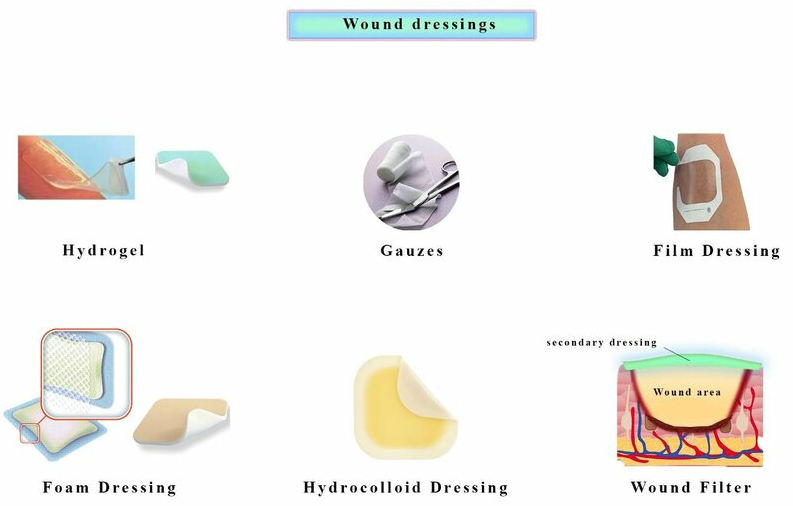 Learning how to properly dress and care for wounds is not only a critical skill for healthcare professionals, but also something that can come in handy for just about anyone. From minor cuts and scrapes to more serious injuries, knowing what to do can make a huge difference in healing and preventing further complications.
Learning how to properly dress and care for wounds is not only a critical skill for healthcare professionals, but also something that can come in handy for just about anyone. From minor cuts and scrapes to more serious injuries, knowing what to do can make a huge difference in healing and preventing further complications.
Before caring out your task of dressing changes, you are going to need the right tools for the job. Firstly, gathering all necessary supplies such as sterile gloves, gauze pads, adhesive tape, scissors, needle and antiseptics – it is your first aid kit must-haves. Think of it as the basic wardrobe for wound care for you ready to perform your task.
Next section is the importance of hand hygiene, and it is a major defense against infections. Washing your hands with soap or sterile soap and water is the first act in the critical play of wound care in along with your gloves, make sure you use them.
Changing the dressing is not only applying a bandage to the wound. You need to assess the wound you are dealing with by having a good look at it. What is the size, what is the depth, is there anything stuck in there? And keep your eyes peeled for the angry red flags of infection – redness, heat or pus. Documenting these in details, so you can measure progress and make smart choices in wound care.
After getting this solid foundation, you now can confidently go into the battlefield of bacteria and bruises. The following is the actual steps of cleaning a wound and using antiseptics effectively. Following these steps is not only maintaining the technique, but also protecting yourself and others from harm.
Step-by-Step Wound Management: Cleaning and Antiseptic Application
We are going to go through one of the most important steps of wound care – the cleaning and the application of antiseptics. Using the right cleaning solution is as important as washing your hands thoroughly with anti-septic soap and water prior to applying sterile gloves. Think of sterile saline solution or appropriate solution to clean the wound to achieve the optimum outcomes. These are typically gentle on the skin and do not mess with the tissue-repairing magic your body is working on.
Antiseptics, you want to apply them around the outskirts of a wound, never directly inside. Some antiseptics can be a bit harsh, and while they are great at zapping germs, they might also irritate or slow down the healing process if not used properly.
So why the big no-no on hydrogen peroxide or alcohol? These can be pretty unforgiving on healing tissue. They are disrupting the delicate new cells that are hustling to close up that wound. I am aiming to keep you in the loop on the gentler alternatives that help rather than hinder.
The next step is golden rule – handle with care. When cleaning a wound, be as gentle as a breeze. Harsh scrubbing is out; soft, careful dabbing is in, and remember, it is an open wound. The gentler you are, the more you are helping the body’s natural healing process.
The Art of Dressing a Wound: Selection, Application, and Monitoring
 Choosing the right dressing for a wound is akin to selecting the right tool for a job. For shallow wounds, a non-adherent dressing might be your best bet, reducing the risk of disturbing the wound bed during changes. On the other hand, wounds with moderate drainage could benefit from a hydrocolloid dressing, which helps absorb moisture and promote healing.
Choosing the right dressing for a wound is akin to selecting the right tool for a job. For shallow wounds, a non-adherent dressing might be your best bet, reducing the risk of disturbing the wound bed during changes. On the other hand, wounds with moderate drainage could benefit from a hydrocolloid dressing, which helps absorb moisture and promote healing.
Now, when it comes to applying the dressing, precision matters. Making sure that it covers the entire wound area with a little bit of an overlap onto healthy skin. This helps create a secure environment for healing. Use medical tape or a bandage to hold the dressing in place, but do not wrap it so tight that it cuts off circulation.
Monitoring the wound is not only checking if it is closed up yet, but also looking for signs of infection like increased redness, a surge in pain, or the wound producing pus. These signs could indicate that you need to consult with a healthcare professional for further advice. Furthermore, if the dressing becomes soiled or wet, it is time to change it.
Keep it in mind, wound care is dynamic. You will adjust your approach as the wound heals. It means you may switch to a different type of dressing or alter how often you change it. Your vigilance in monitoring and adjusting your care is crucial for successful healing.
The next part of this writing is to present the underlying principles that guide how to handle the more advanced aspects of wound care and patient education.
Beyond Basics: Professional Advice and Patient Education
There is a lot of opportunity in knowing when to reach out for professional help in wound care. If it is a complex wound, it is always the safest thing to get advice from a healthcare professional. They can provide specific, tailor-made advice that goes beyond generic guidelines, ensuring the best care for your patient’s specific wound. This advice could be anything from type of wound dressing, cleaning solution, wound swabs or anti-biotics where applicable. Ensuring all those information need to be documented clearly in patient’s progress notes for further observation or following up or for other healthcare professionals needed.
Patient education is equally vital. If you are taking care of someone, make sure they are clued in on the essentials of wound care. This is not only talking them through the process, but also guiding them on what to watch out for. Red flags like increased pain, redness, or pus need prompt medical attention.
Appropriate safe disposal of used dressing is essential. Used wound care supplies can be harmful if not disposed of correctly. Follow local medical waste guidelines to ensure you are not causing harm to others or the environment. In educating patients, emphasize this aspect too, as part of their learning curve.
In summary, mastering the basics of wound dressing and care is a profound step towards empowerment in health. It is not only treatment, but also preventing further issues and embodying proactive care. With the essential skills learned and a readiness to consult professionals when needed, beginners can make significant strides in the healing process. So, educate, apply, monitor, and never hesitate to seek expert advice.
